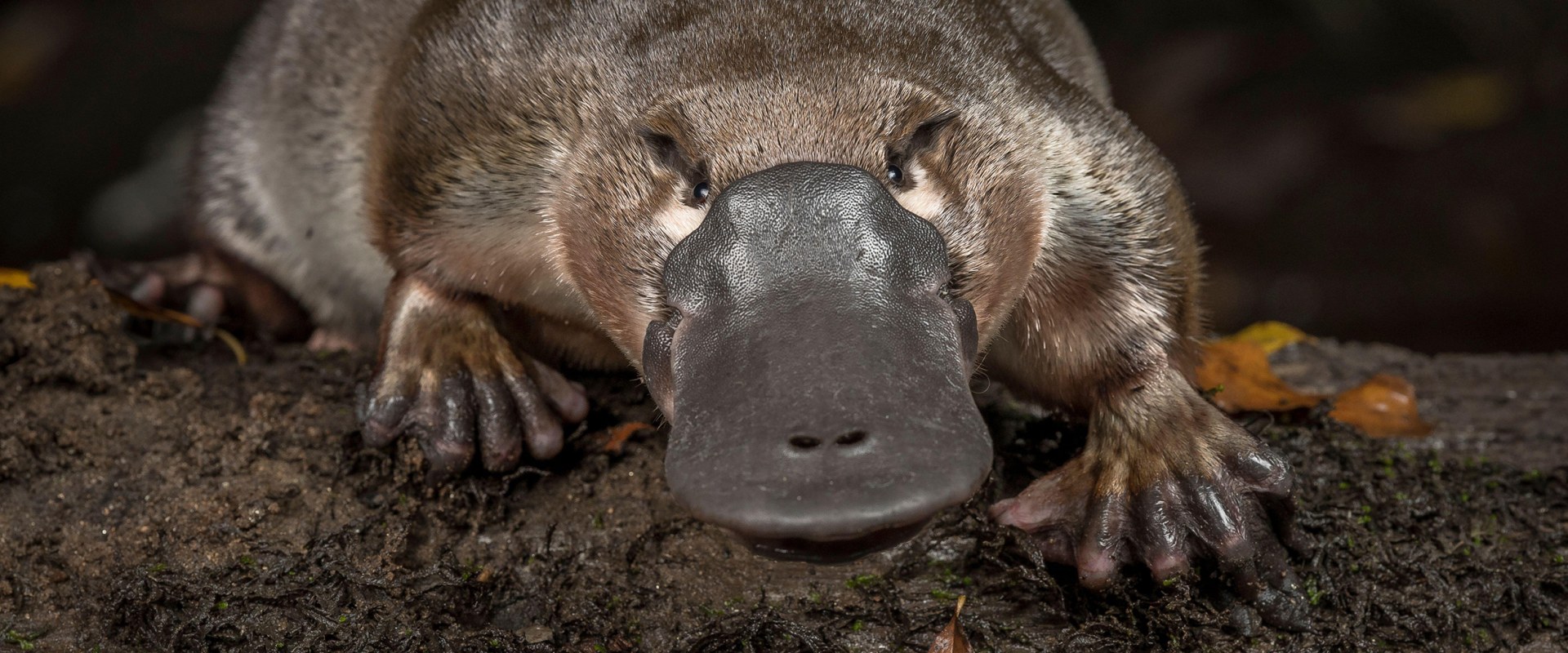Welcome to the fascinating world of the Platypus! This unique creature has long captivated the minds and hearts of people around the world with its peculiar appearance and behavior. Found only in Australia, the Platypus is a semi-aquatic mammal that has baffled scientists and researchers for centuries. In this article, we will dive deep into the world of this enigmatic animal and discover its fascinating features, behavior, and role in the Australian ecosystem. From its bizarre appearance to its incredible abilities, there is so much to learn about the Platypus that will leave you in awe. So sit back, relax, and get ready to encounter one of the most unique and intriguing animals on the planet. By the end of this article, you will have a newfound appreciation for the Platypus and its place in the wild.
Let's begin our journey into the world of Australian wildlife!To truly understand and appreciate the Platypus, we must first look at its physical features. With its duck-like bill, beaver-like tail, and webbed feet, this semi-aquatic mammal is a sight to behold. But what makes it even more interesting is its ability to lay eggs, making it one of the few mammals to do so. This combination of features is what makes the Platypus truly unique and unlike any other animal in the world. Moving on to its habitat and behavior, the Platypus is primarily found in eastern Australia, specifically in freshwater streams and rivers.
It is a solitary creature that is most active at night, making it difficult to spot in the wild. However, if you're lucky enough to catch a glimpse of this elusive creature, you'll witness its impressive swimming and diving abilities. But what about its diet? The Platypus may have a bill similar to a duck's, but it's not just for show. Its bill is actually used to hunt for small aquatic creatures such as worms, insect larvae, and shrimp. It does this by using electroreceptors in its bill to detect electrical signals emitted by its prey.
Talk about unique hunting techniques!Despite its unusual appearance and behaviors, the Platypus plays a vital role in the ecosystem. As a keystone species, it helps to maintain the balance of its habitat by controlling the populations of its prey and serving as a food source for predators. In conclusion, the Platypus is a truly remarkable creature that continues to intrigue and fascinate scientists and wildlife enthusiasts alike. Its unique physical features, behaviors, and important role in the ecosystem make it a must-learn for anyone interested in Australian wildlife.
Habitat and Behavior
The Platypus is a truly unique animal, both in appearance and behavior. Found only in Australia, these elusive creatures have captured the fascination of many with their unusual features and behaviors. Their habitat is mainly in freshwater streams and rivers, where they build burrows along the banks.These burrows provide shelter and protection for the Platypus, as they are semi-aquatic and spend much of their time in the water. They are also known to create complex tunnel systems within their burrows, with multiple entrances and chambers for different purposes. As for their behavior, the Platypus is a solitary animal that is most active during dawn and dusk. They are excellent swimmers and can hold their breath for up to two minutes while diving for food. Their diet consists mainly of insects, crustaceans, and small fish that they hunt underwater using their sensitive bill. One of the most fascinating behaviors of the Platypus is its ability to detect prey through electroreception.
They have specialized receptors in their bill that can sense the electric fields produced by their prey. This makes them incredibly efficient hunters, able to find food even in murky or dark waters. The Platypus also has a unique reproductive process, as they are one of the few mammals that lay eggs. Females will lay 1-3 eggs at a time, which they keep warm by wrapping their tail around them. After hatching, the young are nursed by their mother for several months before venturing out on their own. Overall, the habitat and behavior of the Platypus make it a truly fascinating creature to observe and learn about.
With its unique adaptations and behaviors, it is no wonder that this elusive animal has captured the curiosity of people worldwide.
Diet and Hunting Techniques
Uncovering the Secrets of the PlatypusWhile the Platypus may seem like a strange and mysterious creature, one aspect that is not so elusive is its diet and hunting techniques. As a semi-aquatic animal, the Platypus has adapted to both land and water, resulting in a unique diet and hunting style.Diet:
The diet of a Platypus mainly consists of small aquatic creatures such as insects, larvae, shrimp, and small fish. They are also known to consume small crustaceans found in their freshwater habitats. The Platypus has no teeth, so it uses its strong, keratinized plates to grind up its food.Hunting Techniques:
Being primarily nocturnal creatures, Platypuses are most active during the night when they hunt for food.Their hunting techniques involve using their highly sensitive bills to detect movements and electrical signals from their prey in the water. Once they locate their prey, they use their webbed feet and strong claws to dig up the riverbed and scoop out their meal. Interestingly, the Platypus does not have a stomach, so it stores its food in its cheek pouches until it finds a safe spot to eat. They also have the ability to store food in their burrows for later consumption. Overall, the Platypus has a diverse diet and unique hunting techniques that have allowed it to thrive in its environment. By adapting to both land and water, this fascinating creature has unlocked the secrets of survival in its ever-changing habitat.
The Physical Features of the Platypus
Welcome to the captivating world of the Platypus! As one of Australia's most unique and intriguing animals, the Platypus is sure to capture your attention.In this article, we will delve into the fascinating life and characteristics of this elusive creature. Whether you're an avid wildlife enthusiast or simply curious about the Platypus, this article is a must-read for you. The Platypus, also known as the Duck-billed Platypus, is a semi-aquatic mammal endemic to eastern Australia. It is characterized by its unusual appearance, with a duck-like bill, beaver-like tail, and webbed feet.
It is one of the few mammals that lay eggs instead of giving birth to live young. One of the most unique physical features of the Platypus is its fur. Unlike most mammals, the Platypus does not have a layer of fat or blubber to keep it warm. Instead, it has a dense coat of waterproof fur that helps it regulate its body temperature while swimming in cold water.
The Platypus also has several adaptations for its aquatic lifestyle. Its eyes and ears are located on top of its head, allowing it to see and hear while submerged in water. It also has a special membrane that covers its eyes while swimming, acting as a protective goggle. Another important feature of the Platypus is its electroreception.
It has specialized receptors in its bill that can detect tiny electric fields generated by its prey in the water. This ability helps the Platypus locate and catch its food, which mainly consists of small aquatic animals like insects, larvae, and crustaceans. The Platypus truly is a unique and fascinating animal, with a combination of features that make it unlike any other creature on Earth. Its physical characteristics allow it to thrive in its aquatic environment, making it a true marvel of evolution.
Understanding the Unique Characteristics of the Platypus is key to appreciating this incredible animal and its place in the natural world. In conclusion, we hope this article has given you a deeper understanding and appreciation for the Platypus. From its physical features to its important role in the ecosystem, there's no denying that this fascinating creature is truly one-of-a-kind. So next time you're in Australia, keep an eye out for this elusive creature and remember all that you've learned about it.







